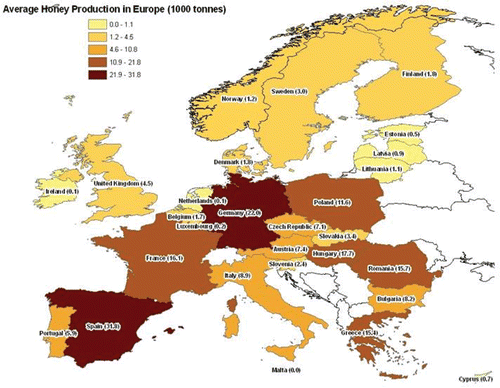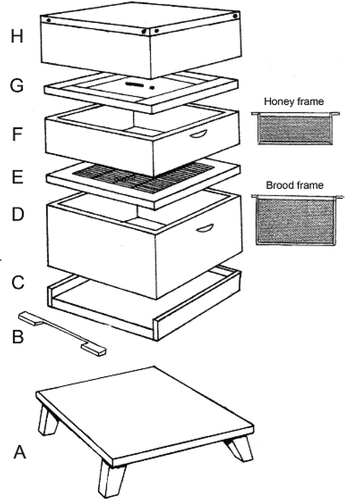Figures & data
Figure 1. Distribution of average honey production in Europe combining FAOSTAT and EUROSTAT data (reprinted figure with permission from EFSA (2008)).

Figure 2. Essential features of the typical modern beehive (reprinted figure with permission from P. Gordon (2004)) (A) Hive stand: Providing clearance from ground level thus avoiding damp, reducing accessibility for intruders (e.g. mice). (B) Entrance block: Denying or reducing bees’ access to hive, in Wintertime equipped with a mouse guard. (C) Floor board: Rest for brood box with entrance allowing access for bees. (D) Brood box: Series of vertically hanging brood frames on which queen can lay eggs and worker bees perform their various tasks (feeding larvae, caring for drones and queen). (E) Queen excluder: Wire construction preventing queen from laying eggs in super; equally impassable for drones. (F) Super: Containing vertically oriented shallower frames for honey storage; in productive years more than one super necessary. (G) Crown board: Insulation board preventing the escape of too much warmth from super. It contains apertures (1) to insert feeder for supplementary feeding, (2) for bee escape (one-way exit: return through this aperture impossible). (H) Roof: Water-proof cover with metal gauze ventilation holes (inaccessible to insects, robber bees and wasps).
